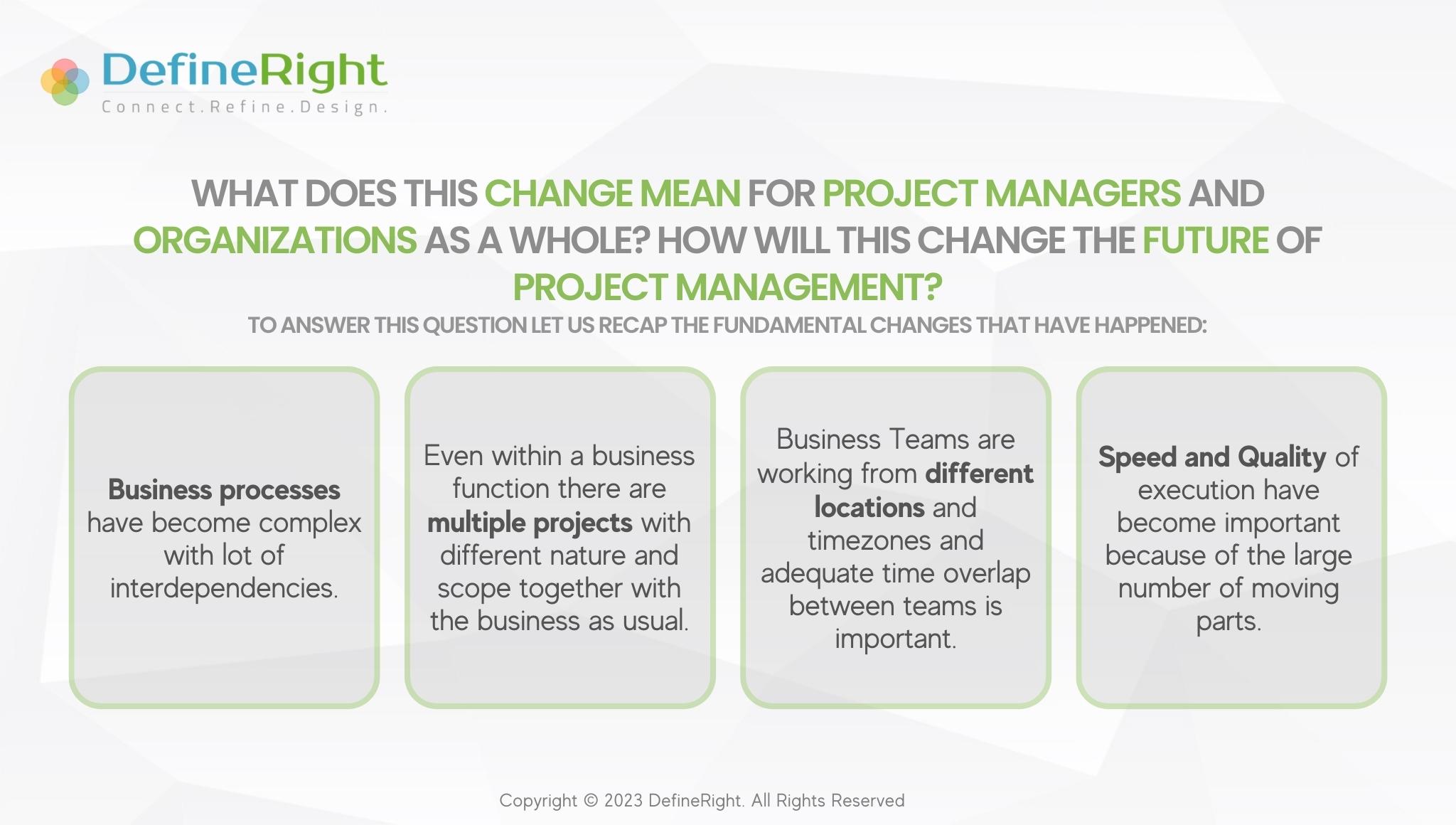
The role of Project Manager, especially for Business-centric lT Projects, has evolved over time to meet the changing needs and complexities of modern business. This role becomes extremely crucial for the success of Techno-Functional projects where both technical and business understanding is required to achieve the project objective. Project Managers identify and allocate teams, set communication channels and cadence with stakeholders, manage risks and issues, and ensure that projects are completed on time, within budget, and to the satisfaction of stakeholders by constantly monitoring and measuring Governance Metrics.
Think of a business function in a large organization. This function at one time is balancing multiple critical project delivery together with the business as usual or day-to-day operations. Project and Delivery Management helps to bring some order to this chaos. Typically, businesses would deploy multiple project managers for the different projects that they were handling. Almost all the time, these project managers were co-located with the customer in their primary location and interacted with the various stakeholders in the project ecosystem. However, I think the particular structure of the role and expectations from that role envisioned effectively reduced the potential of getting the maximum value out of that role.

Increase in Business Process Complexity and Globally Located Teams
Project managers were hired for specific projects of that business function and had little overlap with the other projects that the business was running. This led to multiple project managers working in silos, and this was detrimental to collaboration. Since business activities are interdependent and most value can be added when you understand that interdependency.
With business processes becoming more complex, the demand and outcome deliverables from project management have increased and evolved. It is not just about managing one project but also being aware of the other projects and BAU that the business function is running and having a thorough understanding of interdependency. Hence Project Management cannot be thought of as fulfilling a role but as providing a set of services to ensure that the business functions meet their project objectives. The fundamental assumption here is that no one person can bring in all the expertise that is needed to manage a project. Sometimes they will need to pull in the help of other skill sets to manage certain activities.
The onshore-offshore model has been a common approach and structure in the Information Technology (IT) services industry to deliver projects ranging from Enterprise sized rollout to the development of function-specific business applications and maintenance. The model involved a combination of teams working in different locations, with one team located in the same country as the client (“onshore”) and another team located in a different country (“offshore”). This model served the clients and IT Services companies well primarily through the cost advantage of the model.
However, the first changes to this model came with the rapid globalization of business functions. Teams within the same business function were globally distributed and working out of different places and time zones. And then came Covid, which changed how organizations work vis-à-vis employee location.
Suddenly Project Managers had to make a shift to a new system of working. The established onshore-offshore model no longer existed, as every single team member was working remotely. The Project Managers now had to manage global teams virtually. This increased the focus on risk management and being able to identify interdependencies between teams that are not only working at different times but also have different ways of working.
Changing Expectations from Project Management Services

What does this change mean for Project Managers and Organizations as a whole? How will this change the Future of Project Management?
To answer this question, let us recap the fundamental changes that have happened:
- Business processes have become complex with a lot of interdependencies.
- Even within a business function, there are multiple projects with different nature and scope together with the business as usual.
- Business Teams are working from different locations and time zones, and adequate time overlap between teams is important.
- Speed and Quality of execution have become important because of the large number of moving parts.
Project Management as a Job Title Is a Thing of the Past
The question is whether Project Manager is a Job Title, a Role, or a Service Offering. I believe that Project Manager as a Job Title or Role is a thing of the past, and the need today is Project Management as a service offering.
Because of these changes, enterprise business functions are today looking for project management and delivery-related services that are not only cost-effective but are looking at working and creating teams that:
- Have a shallow learning curve so they can hit the ground running.
- Can add value in terms of not just effective project management but having the ability to understand interdependencies, manage and identify potential process inefficiencies and duplication and work to resolve those.
- Can Work as a thought partner and provide instances of how some of the problems are being handled in the industry.
Project Management – See It as a Bundle of Sub-services Rather than a Role
And so, rather than looking at Project Management as a role, we will need to look at it as a service that provides a bundle of sub-services underneath it based on the nature of the project and the process, data, and systems landscape of the business function. This will help add value and not just focus on time and cost-effectiveness.
At DefineRight, depending on the nature and scope of the project and the data, process, systems, and people landscape of the business function, Project management is broken down into certain sub-services which ensure that it not only fulfills the project objective timely and quality but also ensures that in the process identify process inefficiencies and redundancies.